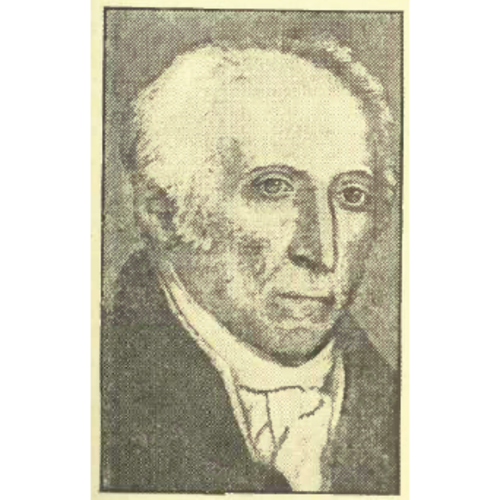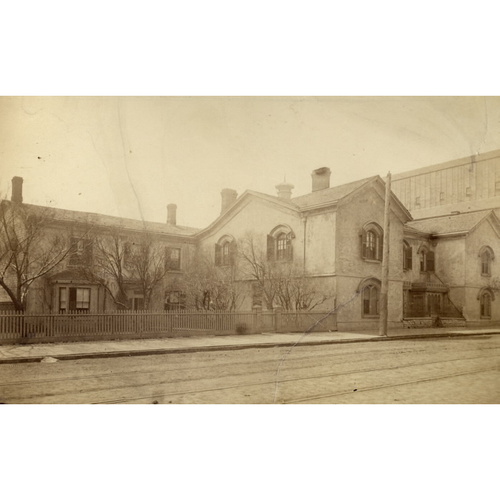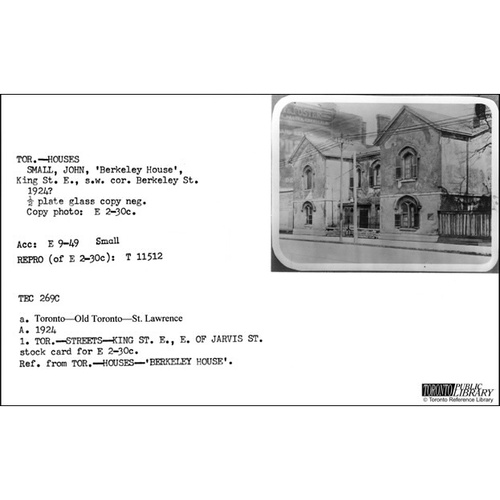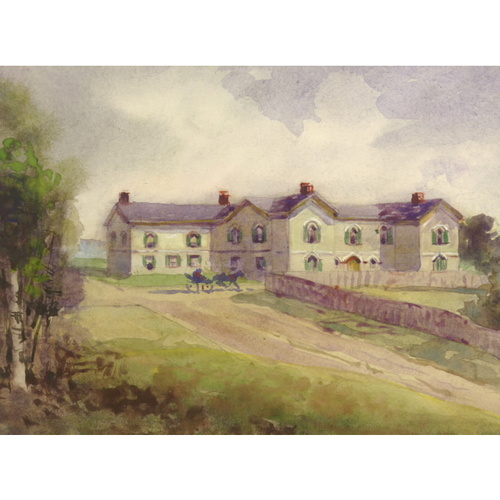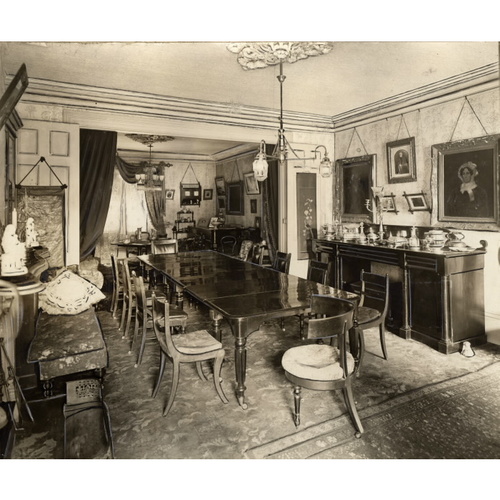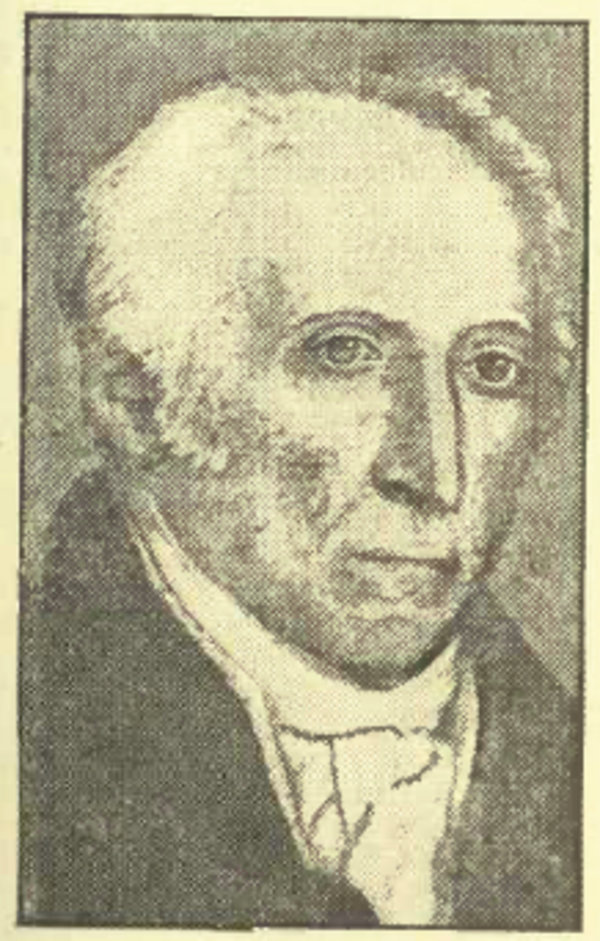
Source: Courtesy of Wikimedia Commons
SMALL, JOHN, office holder, jp, and militia officer; baptized 27 Aug. 1746 in Cirencester, England, eldest son of Joseph Small, a haberdasher, and Mary Atwell; m. Elizabeth Goldsmith, and they had five sons; d. 18 July 1831 in York (Toronto), Upper Canada.
Appointed clerk of the Executive Council of Upper Canada on 12 Sept. 1792 through the influence of Home Secretary Henry Dundas, John Small was sworn in at Newark (Niagara-on-the-Lake) on 18 May 1793. The lieutenant governor, John Graves Simcoe*, although not consulted on his appointment, described Small as “a Gentleman who possesses and is entitled to my highest confidence.” Small received few other compliments. His work was soon badly in arrears, and the next lieutenant governor, Peter Hunter*, was sharply critical of his inefficiency. Small nevertheless held his post until his death, adding to it a justiceship of the peace at York (1796), the lieutenant-colonelcy of the York militia (1798), and the office of clerk of the crown and pleas (12 March 1806 to 10 Aug. 1825).
Small is best known for the duel on 3 Jan. 1800 in which he mortally wounded John White*, the attorney general. Mrs Small had publicly snubbed the notoriously quarrelsome Mrs White. White reacted by questioning the legality of Small’s marriage and the morals of his wife in a letter to David William Smith*, which was communicated to Chief Justice John Elmsley* and received credence in York society. Small insisted upon immediate satisfaction, without determining how much of the gossip had actually come from White. He was acquitted on a charge of murder after a brief trial, despite the hostility of the presiding judge, Henry Allcock*.
The affair ruined both Mrs Small’s reputation and the connection that Small had formed with the Russells, Macaulays, and Macdonells of Collachie. Peter Russell*, who at Newark in May 1795 had defended Small against an anonymous libel, was White’s friend and executor. When Small sought election to the House of Assembly in July 1800 he was defeated; and in a second attempt at a by-election a year later he was crushed, 112 votes to 32, by Angus Macdonell* (Collachie). Of his former friends, Joseph Willcocks* and the elder Robert Baldwin voted for him. On New Year’s Day 1806 Elizabeth Russell would still acknowledge him only by “a distant curtsey.” Two years later, Mrs Small’s invitation to a governor’s levee occasioned resentment.
As clerk of the council, Small was paid £100 a year – less than an unskilled labourer and only slightly more than the senior of his two clerks – besides being entitled to about one-fifteenth of land fees. He had inherited property in Gloucestershire which he disposed of some time before the end of 1795. Forbidden in 1797 to collect fees from loyalists and unsuccessful in petitions for a higher stipend, he was able to establish his family by speculating in land at York. One of the first officials to buy a house there, in August 1795, he had accumulated over 2,500 acres before beginning to sell lots in 1797 and he continued to acquire and sell land. By the 1820s the rise in York land prices had made him prosperous.
He also regained a position in York society. An active churchman (his brother was prebendary of Gloucester Cathedral), he was a trustee of the York District grammar school by 1811 and soon after found a patron in John Strachan* Small even achieved some political influence under Administrator Samuel Smith, to whom Strachan thought him “a considerable Adviser.” He launched one son, James Edward*, on a successful career as a lawyer and reform politician; the youngest, Charles Coxwell, succeeded him in the clerkship of the crown and pleas as well as in his militia commission. His house at York, handsomely rebuilt by Charles Coxwell, stood until 1925.
[The most informative references to Small are in the William Dummer Powell papers (at the AO, MTL, and PAC), the Russell papers (AO and MTL), the various collections of Simcoe papers (see the bibliography accompanying his biography, DCB, vol.5), and Strachan’s Letter book (Spragge). The Gloucestershire County Record Office (Gloucester, Eng.) holds his uncle John’s will as well as the baptismal, marriage, and land tax records of the family. See also E. S. Caswell, “A sketch of Major John Small,” York Pioneer and Hist. Soc., Report (Toronto), 1933: 22–23; W. R. Riddell, “The duel in early Upper Canada,” Canadian Law Times (Toronto), 35 (1915): 726–38; and Robertson’s landmarks of Toronto, vol.1. s.r.m.]
Cite This Article
S. R. Mealing, “SMALL, JOHN,” in Dictionary of Canadian Biography, vol. 6, University of Toronto/Université Laval, 2003–, accessed December 31, 2025, https://www.biographi.ca/en/bio/small_john_6E.html.
The citation above shows the format for footnotes and endnotes according to the Chicago manual of style (16th edition). Information to be used in other citation formats:
| Permalink: | https://www.biographi.ca/en/bio/small_john_6E.html |
| Author of Article: | S. R. Mealing |
| Title of Article: | SMALL, JOHN |
| Publication Name: | Dictionary of Canadian Biography, vol. 6 |
| Publisher: | University of Toronto/Université Laval |
| Year of publication: | 1987 |
| Year of revision: | 1987 |
| Access Date: | December 31, 2025 |


